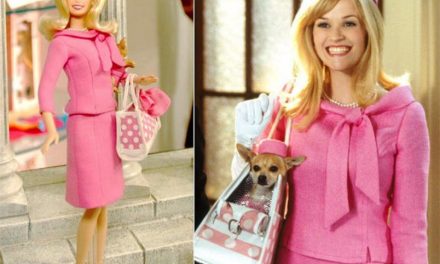For those of us who collect dolls, they are more often than not sources of joy, pride, and wish fulfillment. In some cases, they cause extreme exasperation (when you miss out on a limited edition, for example) or financial consternation (did I really just spend $300 on a BJD . . . again?). When people play with their dolls, I imagine it’s a sense of revisiting happier days of yore—really coming home again emotionally and spiritually. So with all of these good vibrations and happy feelings floating around, why can’t Mattel and MGA Entertainment get along? Is it too much to expect them and their company lawyers to play nice?
On January 18, another round in the corporate slugfest has begun. A Santa Ana, California, courtroom was packed as the legal eagles began to wrangle once more over who really owns the rights to the Bratz Dolls, and all of their plastic paraphernalia, tie-in merchandise, franchise offshoots, and products (both past and present).
It’s hard to reconcile the notion of a courtroom ringing with slurs of shlockiness, charges of industrial spying, and heated exchanges about “lack of veracity and verisimilitude”—fancy ways of saying lies and truth—with the image of these brazen, bodacious Bratz dolls staring haughtily and imperiously from a toy store’s shelf. It seems that if these dolls ever got dragged into a court, it wouldn’t be on charges of corporate espionage, let me tell you!
Bratz have been the punch line about being inappropriate and risqué for about a decade now. Recently, a respected ABC newsman, Jake Tapper, blogged how he was scandalized to find his elementary-school daughter had a pair of these plump-lipped femme fatales in her bedroom. It made me chuckle that this war correspondent/White House analyst was blindsided by the tempest in his very own toy box! And to think, these plastic personalities are now being paraded into court, where their origins, their initial sketches, and their very conception are being verified and validated. (For doll historians, the feud over how the Bratz doll began—whose head did it figuratively spring from—is especially entertaining because of Barbie creator Ruth Handler’s admission of being “inspired” by a German Bild Lilli doll while on vacation in Switzerland. People scolded Handler for copying the Teutonic tootsie too closely and so obviously.)
while on vacation in Switzerland. People scolded Handler for copying the Teutonic tootsie too closely and so obviously.)
The CEO of Mattel, Robert Eckert, and his MGA counterpart, Isaac Larian, are both on hand as the fate of these vixens is decided. The court is going to render a decision that amounts to a multimillion-dollar change in fortune. Some reports have gone on to say this is a billion-dollar Bratz decision, but I don’t know if that’s just because of the alliteration or if the high-stakes nature is really that high stakes!
As the sides snipe at one another, the jury has to figure out if Bratz creator Carter Bryant, a former Mattel employee, was on the toy giant’s clock when he imagined these sultry substitutes. The Mattel lawyers are saying that the idea belongs to them, and Bryant was persuaded to share trade secrets with MGA when he deserted the Barbie-and-Ken corporation. MGA is likening themselves to David in an unfair battle against a mega-industry Goliath.
Susan Estrich, well-known talking head on FOX News, and one of Mattel’s corporate lawyers, shot back: “David made his own slingshot. He didn’t steal it!”
No matter how the jury decides, things don’t look good for the Bratz gals. If Mattel wins, will they allow these Angelina Jolie look-alikes to continue to see the light of day, or will they be rubbed out, confined to the trash heap of forgotten, onetime popular brands? Are they going to be sent to “swim” with the Fisher-Price outcasts—a fate reserved for toys that are no longer desired or desirable? Will they be whimsically whacked?
Or if MGA wins the proceedings, how sullied is their reputation? Even if the accusations against them are proven to be false, can the company pull itself together and rise above the charges of intellectual thievery, bribery, and industrial double-speak?
It’s been alleged that many retailers are shying away from the Bratz dolls these days—I never thought I’d type “shy” and “Bratz” in the same sentence. But supposedly, many companies don’t want to traffic with these dolls that are causing so many headaches and heartburn for Mattel.
With tens and tens of millions of dollars already spent, and more bills piling up over the next four months (that’s the estimate of this trial length), how much of a Bratz market share will be left for either company to capitalize upon?
All of this holds a particular interest for me because my daughter, Jane, who is six years old, just got the figure-skating/Olympic Ice Princess Bratz for Christmas. Jane is a real rough-and-tumble little girl who says she wants to grow up to be a “circus balancer, bug killer, spy, FBI agent, scientist, and minivan designer.” With so many careers before her, she uses her toys to enact her future occupations. The Bratz doll really captured her imagination because it spins and twirls, plus it came with a life-size gold medal. Jane played with this doll for hours—an accomplishment for her limited attention span—and she had the doll pretending to be a “circus balancer” because of her flexible, poseable limbs.
Jane is a real rough-and-tumble little girl who says she wants to grow up to be a “circus balancer, bug killer, spy, FBI agent, scientist, and minivan designer.” With so many careers before her, she uses her toys to enact her future occupations. The Bratz doll really captured her imagination because it spins and twirls, plus it came with a life-size gold medal. Jane played with this doll for hours—an accomplishment for her limited attention span—and she had the doll pretending to be a “circus balancer” because of her flexible, poseable limbs.
Now, with the court case in the news once more, and the accusations getting very specific and boiling over into charges of corporate espionage on both parties’ ends, Jane can add “spy” to her Bratz doll’s résumé. She doesn’t even need to imagine that; it’s being spelled out in black-and-white in court dockets even as she makes believe.
Where do you stand on this Barbie vs. Bratz battle? If you were put on the witness stand, on whose side would you testify? Or is there a way to bring the swift wisdom of Solomon to this solid case of he said/she said/they both said? Inquiring minds want to know!
PHOTO CAPTIONS
Barbie is one of Mattel’s most famous and recognizable properties. In her “Legally Blonde” vestments, she shows off what a formidable and popular opponent she can be. Will she be the victor in her toe-to-toe matchup against the Bratz lineup? [Top]
One of the strongly contested points of the Barbie vs. Bratz briefs is the origin of the Bratz doll. Who conceived it? When was it created? Did it belong to Mattel by virtue of their employment of Bratz designer Carter Bryant? These same allegations swirled around the birth of Barbie back in 1959, when industry watchers said she bore too strong a resemblance to the German doll Bild Lilli, a gag gift for men of the “Mad Men” era. [Middle]
The Bratz collectors will be spinning around in circles over the next few months, wondering if their preferred playthings will continue to exist in the near future. Currently, the fate of MGA and the Bratz franchise is skating on thin ice. [Bottom]







